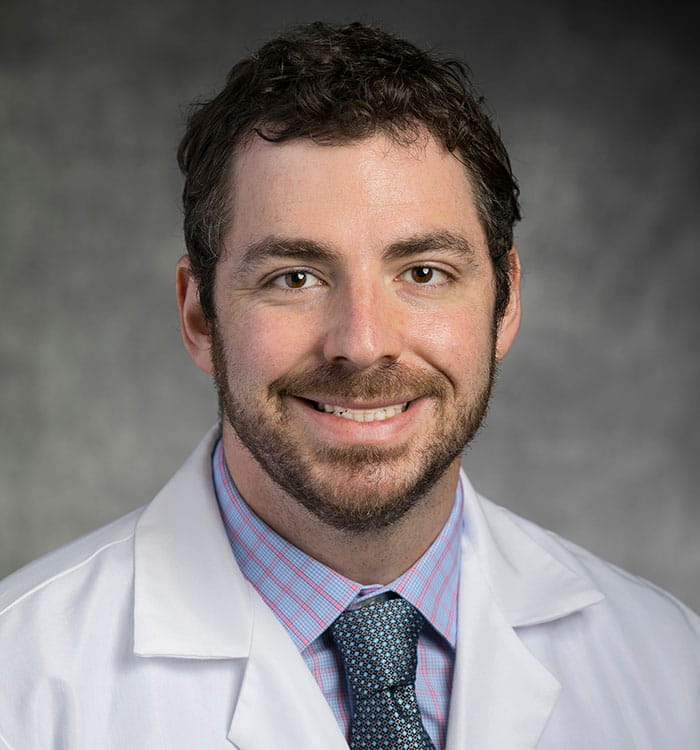JAMA Study Finds Patients with Prostate Cancer Are Increasingly Choosing Active Surveillance Over Treatment
June 26, 2023
Active surveillance (AS) is increasingly recognized as the standard of care for low- and some favorable intermediate-risk prostate cancers (PC).
Innovations in Urology | Summer 2023
A recent study published in JAMA Internal Medicine1 found that the number of patients choosing AS is rapidly increasing. Drawing on information gathered for the Surveillance, Epidemiology and End Results (SEER) Prostate with Watchful Waiting (WW) database, researchers found that from 2010 to 2018, the use of AS in the U.S. increased from 16 to 60 percent for low-risk PC and 8 to 22 percent for favorable intermediate-risk PC.
 Jonathan Shoag, MD
Jonathan Shoag, MDSenior author Jonathan Shoag, MD, says, “These data demonstrate that a diagnosis of prostate cancer no longer means a patient will automatically undergo treatment and further strengthen compelling arguments that the benefits of screening for prostate cancer with PSA [prostate-specific antigen] far outweigh harms.” Dr. Shoag is a urologic oncologist at University Hospitals Urology Institute and University Hospitals Seidman Cancer Center.
Lee Ponsky, MD, Chairman, University Hospitals Urology Institute, Leo & Charlotte Goldberg Chair in Advanced Surgical Therapies and Master Clinician in Urologic Oncology at University Hospitals Cleveland Medical Center, was a co-author of the study. The two physician-scientists collaborated on the cross-sectional study with researchers from Vanderbilt University Medical Center, Weill Cornell Medicine and the National Cancer Institute.
While PC is the second leading cause of cancer death in men, individuals with appropriate risk profiles often benefit from watching a cancer rather than proceeding to treatment, as this delays or avoids the side effects of treatment. Compelling data was recently reported from the United Kingdom’s ProtecT trial, which randomized 1,643 participants diagnosed with localized PC to surveillance, prostatectomy or radiotherapy.2
At a median follow-up of 15 years, “surveillance did not increase risk of death from prostate cancer,” Dr. Shoag says. “While there were some costs to starting out with surveillance, including a slightly increased risk of the cancer spreading, and most men in the surveillance arm eventually receiving treatment, we think this data show it is safe to start out by watching these cancers.”
Call to Improve Prostate Cancer Screening
“My primary academic interest includes understanding the harms and benefits of prostate cancer screening,” says Dr. Shoag. “Historically, the U.S. has lagged behind some other Western countries in terms of the percentage of prostate cancers we identify and watch. Hopefully, these types of analyses will reinforce the value of early diagnosis, as finding a cancer no longer means someone will be treated with the associated side effects. This is important — we need to do better at screening patients, particularly those at high risk, including Black men and men with a family history.”
A Continuum of Care
Patients choosing AS continue to need urologic care. Typically, patients put on surveillance have regular PSAs and one or more additional biopsies and additional imaging. Other factors used to evaluate whether an individual is a good candidate for AS include Gleason score, symptom profile, age at diagnosis, comorbidities and patient preference. “We also have multiple trials open and that are being opened for patients on surveillance to try to understand how to best watch our patients,” Dr. Shoag says.
“My job as a urologist, and our job in the community, is to identify the prostate cancers that have the potential to cause harm and treat those cancers, while observing the cancers that have less potential to cause pain and suffering. While some men choose to have their cancer removed soon after diagnosis, I think surveillance is the preferred option for the vast majority. There are certainly some side effects of treatment that can impact quality of life, and I want to ensure individuals are making informed decisions.”
Expert Local Care
Northeast Ohio has a large PC population, with a high proportion of men at elevated risk for less-favorable outcomes. “At University Hospitals, we have top-notch leaders in urology, radiation-oncology, pathology and radiology guiding multifactorial surveillance and collaborating to decide what is best for each patient,” says Dr. Shoag. “When an individual does need to move from surveillance to treatment, we have world-class doctors at the forefront of their fields providing care that offers excellent outcomes and minimized side effects.”
For more information or to refer a patient, contact Dr. Shoag at Jonathan.Shoag@UHhospitals.org.
1https://pubmed.ncbi.nlm.nih.gov/37010836/
2https://www.nejm.org/doi/full/10.1056/NEJMoa2214122
Contributing Expert:
Jonathan Shoag, MD
Urologic Oncologist
University Hospitals Urology Institute
University Hospitals Cleveland Medical Center
Associate Professor
Case Western Reserve University School of Medicine
Case Comprehensive Cancer Center


